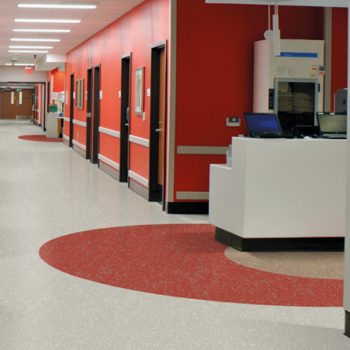
Atlanta Falcons Go Green with New LEED Platinum Stadium
- Posted by Gaby
- On February 28, 2017
- 0 Comments
- Falcons, go green, green initiatives, Mercedes-Benz Stadium, Scott Jenkins, Thomas Dimitroff
By Rachel Leber
ATLANTA — The Atlanta Falcons’ NFL organization is planting seeds for future generations with their new green initiatives in the Metro Atlanta community and beyond. In addition to “going green” behind the scenes, the Falcons’ new home stadium will be none other than the new sustainably-built Mercedes-Benz Superdome in Atlanta, which is on track for LEED Platinum status in time for its fall 2017 opening.
The 1.9-million-square-foot stadium project broke ground in May 2014 with a construction budget of $1.4 billion and is scheduled to open in time for the 2017-2018 football season (official date yet undetermined), according to Chris DeVoder, sustainable design leader from HOK, the architecture firm responsible for designing the stadium. Along with HOK, locally based tvsdesign, Goode Van Slyke Architecture and Stanley Beaman & Sears, also assisted in design. The sustainability initiatives of this new structure will save 34 percent in energy usage versus a typical stadium, according to Michael Kelley, account executive for the Falcons.

With the goal of “going green,” the $1.4 billion stadium has paid close attention to sustainable design and building materials.
Photo Credit (all): HOK
Features that make this new Mercedes-Benz Stadium more green and sustainable include an LED lighting system that will use 60 percent less electricity than the current system and will last more than 10 years, according to Scott Jenkins, general manager of Mercedes-Benz Stadium and board chair and co-founder of the Green Sports Alliance, in a recent statement. Additionally, there is a retractable roof that is designed to maximize the amount of natural light when open, solar panels on top of the garage nearest the stadium that will power the charging stations providing energy for electrical vehicles and waterless urinals to save water. There is a high efficiency heating and cooling systems to reduce energy costs and a rainwater catchment system (with a 680,000 gallon cistern) to collect water for irrigation and the cooling towers. They intend to get every available water credit from LEED, said Jenkins.
The first sustainability-related discussions between the design team and the Falcons began in May 2013, according to DeVoder, where he said that things began on a high note right away and have continued that way ever since. He said they had all been separately thinking “what if?” regarding the sustainable design of the stadium, so when they all came together with the same mindset, he knew it was going to be good.
More fruits of the visions and discussions from those early meetings brought about incredibly thorough efforts to be green. The new stadium will have on-site edible gardens and farm-to-table organic food offerings for purchase by customers throughout the facility. The new stadium will also recycle, compost and have plenty of bike racks for cyclists attending games. In a further effort to be environmentally responsible, the stadium will be served by two MARTA (Metropolitan Atlanta Rapid Transit Authority) light rail stops, with a prediction that approximately 25 percent of game attendees will now take MARTA to games — one of the highest rates in the NFL, according Jenkins. Even the demolition of the Georgia Dome — the Falcons’ old stadium — will serve to provide grassy areas for parking, tailgating and community use on non-game days.
Jenkins explained that he and Thomas Dimitroff, general manager for the Falcons spearhead the green efforts from different angles. “[Dimitroff] is all about football and I’m all about the stadium. We do work with our athletes to promote our initiatives, and I focus on some of what we do operationally in our venues,” Jenkins said.
Just one example of how the team promotes sustainability: Last year, the Falcons helped to raise money for Habitat for Humanity to build a new house in Atlanta with their Recycle for Good project that set a goal to collect 3 million aluminum cans.


0 Comments